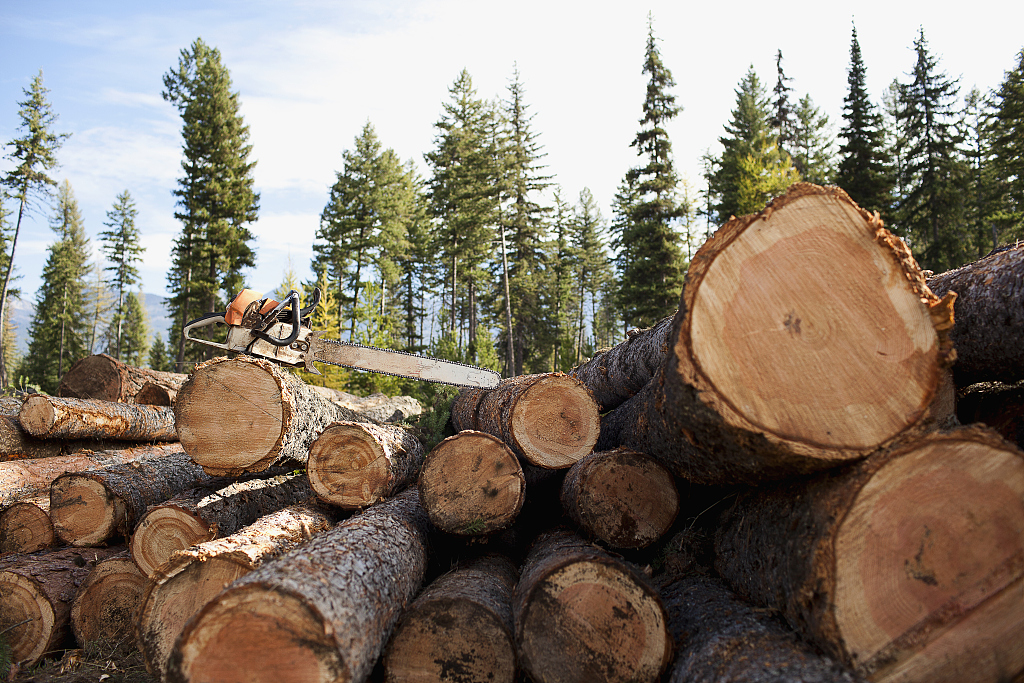A team of Chinese researchers and their British counterparts have found that global mountain forests are disappearing at an accelerating rate, putting increasing pressure on threatened species.
The study published on March 18 in the journal One Earth under Cell Press found that about 78.1 million hectares or 7.1 percent of mountain forests have been lost since 2000, made even worse by the loss in tropical biodiversity hot spots.

About 78.1 million hectares or 7.1 percent of mountain forests have been lost since 2000, according to the study. /VCG
About 78.1 million hectares or 7.1 percent of mountain forests have been lost since 2000, according to the study. /VCG
The researchers from the Southern University of Science and Technology in China and the University of Leeds in the United Kingdom tracked changes in mountain forests on a yearly basis from 2001 to 2018.
The annual rate of loss increased by 50 percent from 2001-2009 to 2010-2018, with approximately 5.2 million hectares of mountain forests lost per year.
Logging was the biggest cause of mountain forest loss overall, accounting for 42 percent, followed by wildfires at 29 percent, "slash-and-burn" cultivation at 15 percent, and permanent or semi-permanent agriculture, accounting for 10 percent, according to their findings.

Logging was the biggest cause of mountain forest loss. /VCG
Logging was the biggest cause of mountain forest loss. /VCG
According to the researchers, this acceleration probably resulted largely from rapid agricultural expansion into highland areas in Southeast Asia and increased logging of mountain forests.
Tropical mountain forests experienced the maximum loss and the most rapid acceleration rate, but the good news is that these forests saw a faster rate of regrowth compared to mountain forests in temperate and boreal regions, according to the study.
More than 85 percent of the world's bird, mammal and amphibian species live in the mountains, particularly in forest habitats, according to the study.
To protect sensitive species in biodiversity hot spots, the integrity of forests in large enough zones must be maintained beyond simply preventing forest loss, the researchers said.
(If you want to contribute and have specific expertise, please contact us at nature@cgtn.com.)
Source(s): Xinhua News Agency